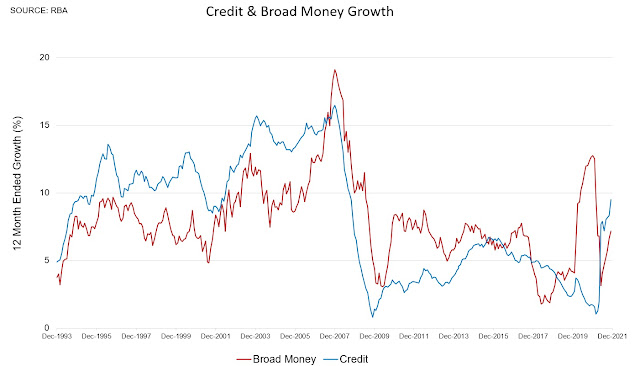Credit gap opens
Credit growth was strong in December, with back-to-back strong months of business lending taking business credit growth up to 8.4 per cent for the 2021 calendar year (following negligible growth in 2020).
Credit growth in the economy overall increased to 7.2 per cent, for the strongest annual result in 13 years.
Housing credit growth increased to 7.4 per cent for the year, recording steady results over the last couple of months of the year.
The growth in housing credit continues to be dominated by owner-occupiers, although the investor cohort has picked up some momentum, albeit from record low credit growth.
It's hardly much to stress about, given the average Aussie household is now almost four years ahead on their mortgage repayments, while households are sitting on an unprecedented almost $½ trillion in savings.
The housing credit impulse is also cooling.
The January figures will show housing prices up 21 per cent year-on-year, but annual price growth for property will evidently fade from there, while new listings are now on the rise.
We'll still have to see how January plays out, given everything that's happened since Christmas, but the stimulus was certainly working its magic late into 2021.
---
Edit: Household credit to income is essentially unchanged since 2005; while net of deposits, the ratio has declined comfortably.
(h/t Stuart Wemyss).
Source: RBA





